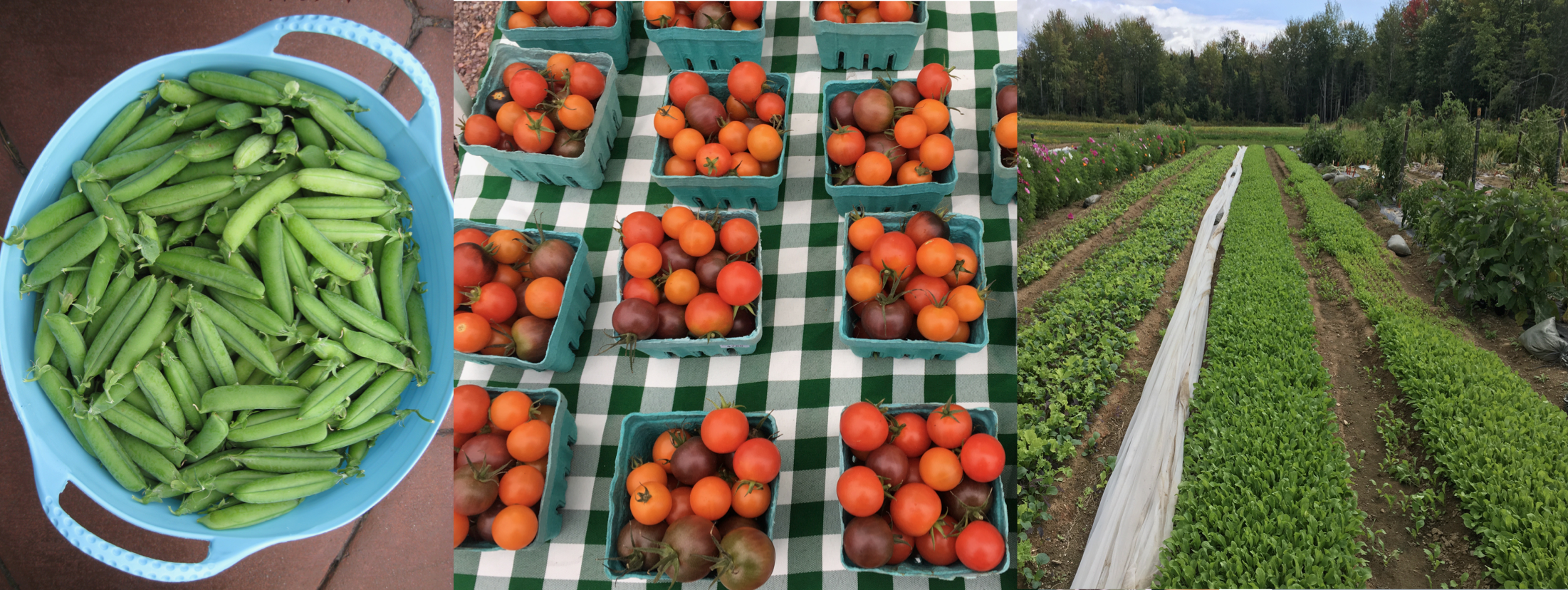Just like with scaling up and planning your garden, starting a small farm provides not only some food security for you and your family, but also for your neighbors and community members. It might add a few jobs and infuse money into the local economy. Climate change is increasing the length of the growing season and warming temperatures make it possible to grow a wider range of crops in Alaska.

Attractive displays go a long way to selling your crop.
While I’ll be the first to point out that as a small farmer it’s very hard to turn a profit, let alone make a livelihood, I know food makes a big portion of my family’s budget so growing food, whether in a garden or farm makes more and more sense. Food prices increased nationwide by 7.9 percent from February 2021 to February 2022.
This thesis, Assessing Food Security in Fairbanks, Alaska is dated, but still provides insight into the demand for and challenges of farming in Interior Alaska. And, this market analysis also provides important information for Interior Alaska on the demand for local produce.
Another interesting way to gauge interest in whatever product you would like to grow or raise is by starting a GoFundMe campaign. You can even guarantee a certain amount of product at the end, much like a CSA, although with perhaps a bigger lag in when the consumers receive their product. Goosefoot Farm in Fairbanks did this as well as a crowd-funding campaign when they started their farm a few years ago.
The Alaska Food Policy Council commissioned a report looking at specific ways to improve food security across the state in 2014 and 2022. A more recent, but non-Alaskan specific report entitled, Small Farms, Big Potential details the many non-remunerative benefits and rewards of small farms, like open space, potential for climate mitigation, health and much more.

One of the first steps you’ll need to take as a farmer is to find land to farm. The Alaska Farmland Trust started a farm link program to connect folks who want to farm with those who have farmland available. No land, no problem, try Curtis Stone’s urban farming model but COVID-19 could make this a tiny bit more challenging.
Be sure to check out USDA’s beginning farmer website. There are so many grants and programs available for farmers, in particular, beginning farmers, and there are also specific programs geared toward women and minorities. There are dozens of grants, resources, and loans available for small farmers. The Alaska State Division of Agriculture offers a small grant to individuals and organizations wanting to improve food security in their community, especially those that are food insecure.
Of course a little know-how doesn’t hurt either. That’s where your local Cooperative Extension Service comes in. They can help you with all kinds of information, workshops, and knowledgeable expertise. Other farms across the state offer internships, apprenticeships and even training courses.
Before you jump in with both feet, I’d recommend reading Letters to a Young Farmer: On Food, Farming, and our Future, edited by Stone Barns Center for Food and Agriculture. It gives some great perspectives on the tremendous challenges and joys of farming on a small-scale. Consider as well that most farmers are making more of their money off-farm then on-farm.
Emily Garrity at Twitter Creek Farms and other farmers in Homer have shown that hard work, striving for efficiency, and using the right tool for the right job can result in a viable small farm in Alaska.
Published in the Fairbanks Daily Newsminer May 17, 2020. Updated April 5, 2022.